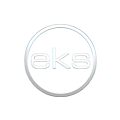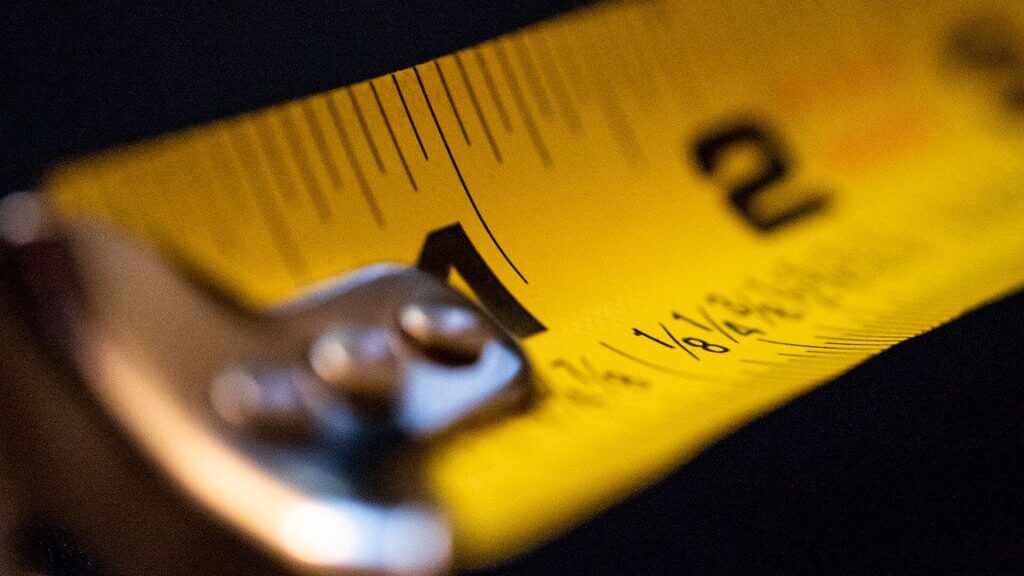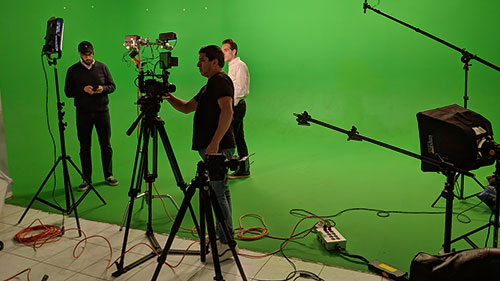
Z Cam E2 First Impressions
I recently bought the Z Cam e2 cinema camera. There doesn’t seem to be too much information online about the camera, so I decided to share my initial thoughts.
This isn’t a full blown review because I have only had the camera for a week. I haven’t had much time to thoroughly test it out. Hopefully I can do a proper Z Cam E2 review after I have had more time with it.
What is it?
The E2 is a cinema camera made by Chinese company Z Cam. It has a micro 4/3 sensor and lens mount. This little camera is capable of DCI 4k and UHD up to 120fps using the h.265 codec. The camera also records DCI4k and UHD up to 60fps recording in various flavors of ProRes.
The Z Cam e2 can record 10bit 422 color information and claims 13-15 stops of dynamic range using Z-Log2 (depending on the camera settings). It also records rec. 709, HLG and a flat color profile, which is somewhere between Z-Log2 and rec. 709.
The camera uses Sony NP-F style batteries, and can record to Cfast cards as well as an SSD via USB-C. You can control and monitor the camera with an iphone app through wifi or USB-C. (there is supposedly an Android app in development, but it is apparently buggy at the moment).
It can also be controlled with a windows computer through the Z Cam software. Multiple Z Cam E2 cameras can be connected and controlled at the same time.
For a full list of the cameras specs visit the Z Cam website.
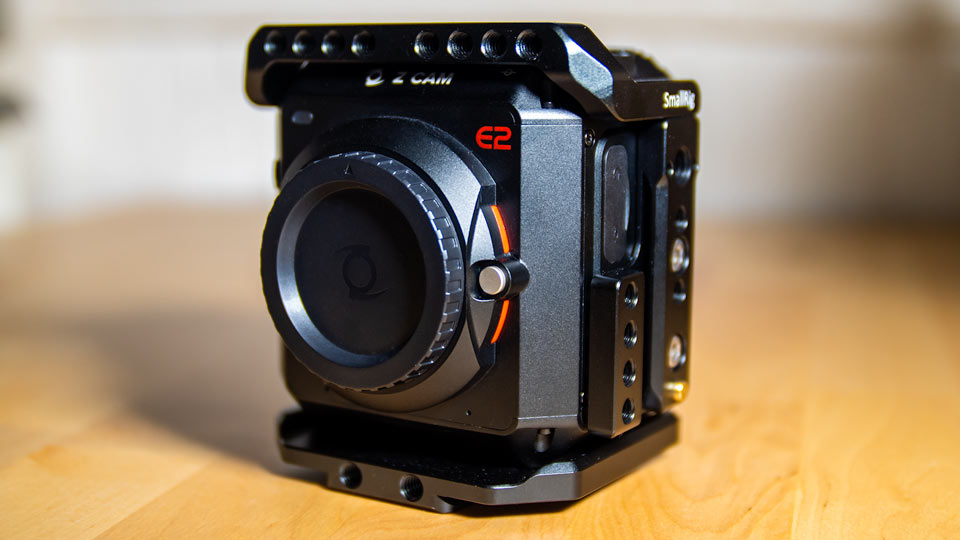
Z Cam E2 Build Quality
The Z Cam E2 is small. It’s about 2/3 the width of a mirrorless camera, but has more depth. The body is made from aluminum, which I’m assuming acts as a heat sink as well as making it a pretty sturdy camera.
The camera feels really well built, and has a number of function buttons, which are programmable. There are a bunch of 1/4” 20 threads on the camera (I think 9) for mounting accessories, and an assortment of connectors on the back for power, camera control, HDMI out, etc.
Unfortunately all of the ports on the back are completely exposed. It would have been nice if some plastic or rubber covers were supplied in the box, so dust doesn’t get into them when they’re not in use. I’ll be hunting through my old computer parts to look for suitable covers for things like the LAN port.
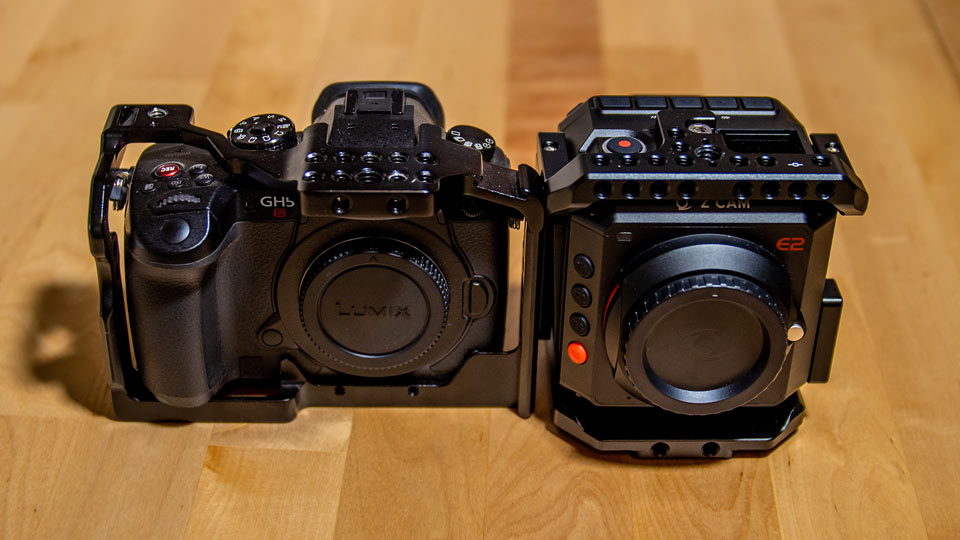
Form Factor
The Z Cam e2 cinema camera is basically a cube with a few buttons, and a tiny screen on top for navigating the menus. This is both a strength and weakness of the camera.
The camera kind of follows the “cinema camera” mentality that many high end cameras have (like Alexa mini and Red). The Z Cam e2 is basically just a “camera brain” that you will rig up and add extra components to depending on the shooting situation.
This is one aspect of the camera that I appreciate. You can strip the camera down to just a lens and battery for use on a gimbal, or kit it out with rails, handles, a monitor, mics and an audio interface when needed.
You could just put a lens and battery on it, pop in a CFast card and start shooting (monitoring and controlling with an iphone). However, you are most likely going to need some accessories to really get the most out of it… or at least to mount your iphone.
Using the Camera
I haven’t really had a ton of time to shoot with the camera, but so far I am really enjoying it.
The on camera screen is really small. I wouldn’t try to use it for monitoring, but it is more than adequate for navigating the menus. There are enough options in the menus to adjust for various video shooting scenarios, but not too many to be overwhelming.
If you’re coming from DSLR, mirrorless or larger bodied cinema cameras you will definitely miss things like scroll wheels and joystick controls. The iphone app is cool, and can help a little bit with navigating the menus, but there is a definite lag using the iphone app over wifi. (I haven’t tried the app by connecting through USB-C, because I have an SSD attached there.)
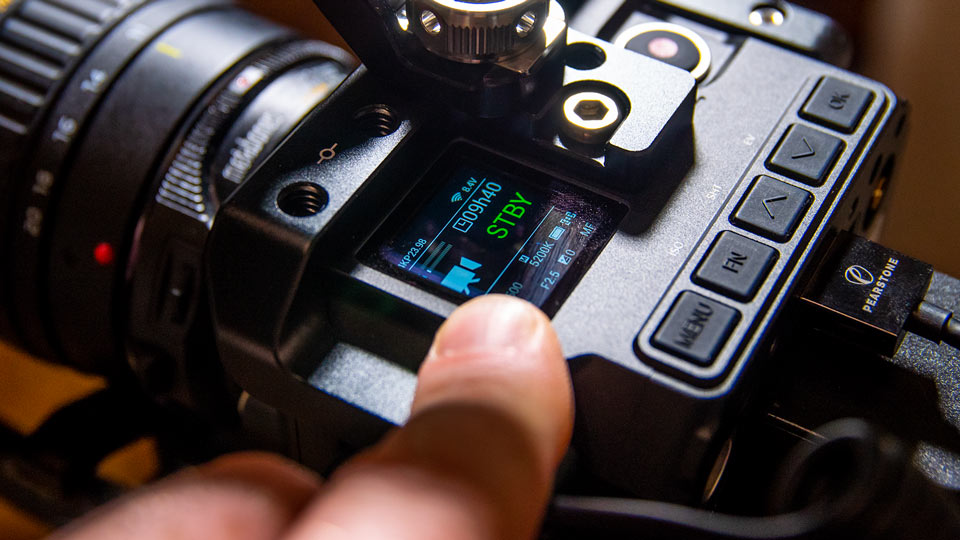
Using the Buttons
I prefer to use the on camera buttons and an external monitor rather than the iphone app. The Menu can be output over HDMI to an external monitor, and turned off and on fairly easily.
The menus are laid out fairly well, and don’t really take too much time to get accustomed to.
After I programmed some of the buttons to control iris, zoom to check focus, and white balance I really don’t have too much trouble changing what I need fairly quickly.
One complaint I do have is the placement of the custom buttons. They are on the front right side of the camera. Depending on how I rig the camera it can be a little cumbersome trying to reach the controls. I purchased the smallrig cage, so I can easily change the location of handles and other accessories depending on the situation.
The buttons also feel a little spongy. Occasionally I’ll press a button, and feel like the camera didn’t respond. You need to be very deliberate with your button pressing, and press right in the middle of the button. This makes it a little bit of a pain to make changes super quickly. I’m already getting used to the buttons, but it does make changing settings slightly slower than on other cameras.
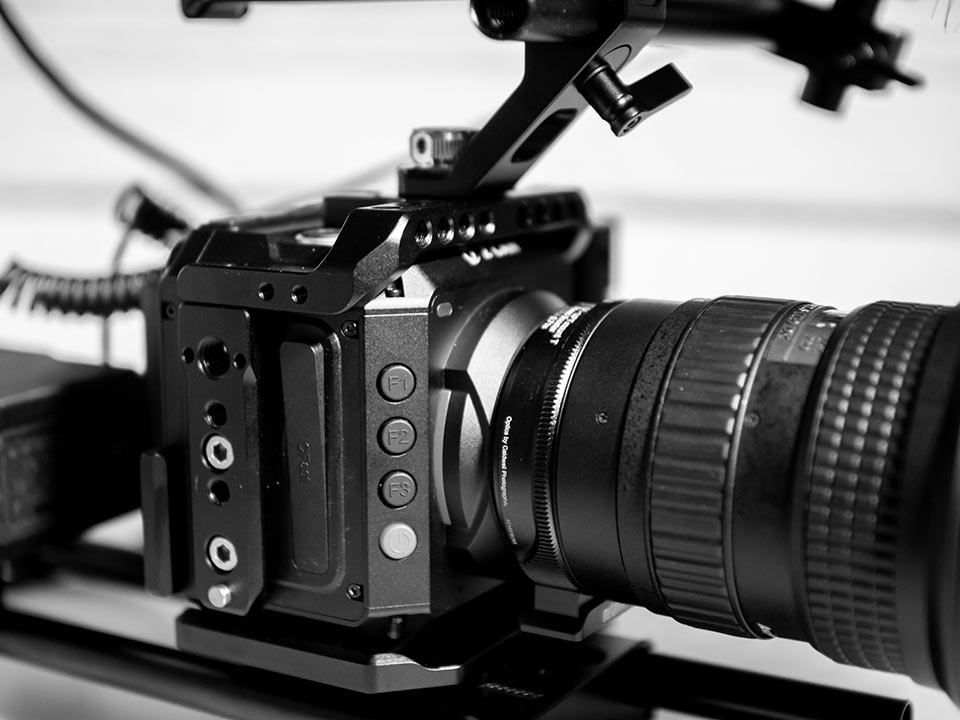
Image Quality
Overall I think the image quality is fantastic – having ProRes and h.265 codec options is great. I can use Prores HQ for any green screen or compositing shoots I might have, and switch to h.265 when doing run and gun documentary work to save on storage space.
I didn’t do any scientific tests of the dynamic range, but I will say that it seems to have better latitude than my Panasonic GH5S in the quick and dirty comparison I did.
The colors and detail of the image are very nice to my eye. The Z Cam e2 produces great video in a variety of shooting modes, and the Z-log2 is quite nice to work with in post production. (I’m still working out whether Z-Log2 should be exposed to the right or not and creating custom LUTs – I’ll update when I decide what works best for my style of shooting)
120fps Slow Motion
The 4K 120fps (h.265 only) is a great feature to have and will definitely come in handy on many future projects. (I have one client that loves slow motion more than Michael Bay). The 120 fps quality is probably slightly lower than shooting in ProRes, but I think you would be hard pressed to really notice a difference.
There is a slight fixed pattern noise when shooting video at 120fps. This can show up as horizontal lines in the shadow areas of the video footage. This noise seems to go away when the image is over exposed a little bit. The noise will also pretty much disappear once you introduce contrast back into Z-Log2 footage, but it is something to be aware of.
The noise in the slow motion footage from the Z Cam E2 isn’t great, but it also isn’t terrible. It can very easily be removed with plugins like Neat Video. However, if you were to severely underexpose your footage this might not be the case. It seems like nailing proper exposure and having plenty of light is ideal for shooting at high frame rates.
Getting a Super 35 “Look”
You might want to consider a focal reducer if you want to achieve the super 35 look on micro 4/3 or have a lot of fullframe glass. (Metabones and Commlight are the only confirmed compatible models as of now). However, this isn’t necessary, and for gimbal work it will probably be easier to use native micro4/3 lenses.
Z Cam e2 – Company and Community Support
Z Cam has set up a facebook group specifically for the e2. It is a closed group, which is strange, but I think they’ll pretty much let anyone join.
This group is both wonderful and a pain in the butt.
Positives
On the plus side it is a fantastic resource for all things Z Cam e2 related. The CEO and engineers of Z Cam are constantly monitoring the posts and responding to questions and feature requests. It appears that many feature requests and suggestions have found there way into the newest firmware updates, which seem to be fairly frequent.
Z Cam also posts updates on what they are working on, and future developments/products. This is pretty much unheard of in the pro camera world, and a really great way for them to engage with their customers.
Negatives
The negative side to this facebook group is… well it’s a facebook group!
There are the occasional “Use the search feature” comments when asking a question. Using the search feature can lead to reading 10 posts with 30 comments each just to find that your question isn’t answered.
For the most part everyone is very helpful. You can learn about lens and other equipment compatibility issues and get info you would never find out about a different camera. One user is testing out which USB-C thumb drives you can record to, and in which modes. This isn’t something I have seen from video shooters since the days of hacking the GH2.
Ideally Z Cam would update there website with all of the newest information. There really should be one location to find out about the latest features, shooting modes, compatibility with lenses, adapters, audio cables etc. – especially since they seem to update the camera so often.
Unfortunately that is not the case, so for the latest information about the camera, firmware, or associated gear you’re heading to facebook.
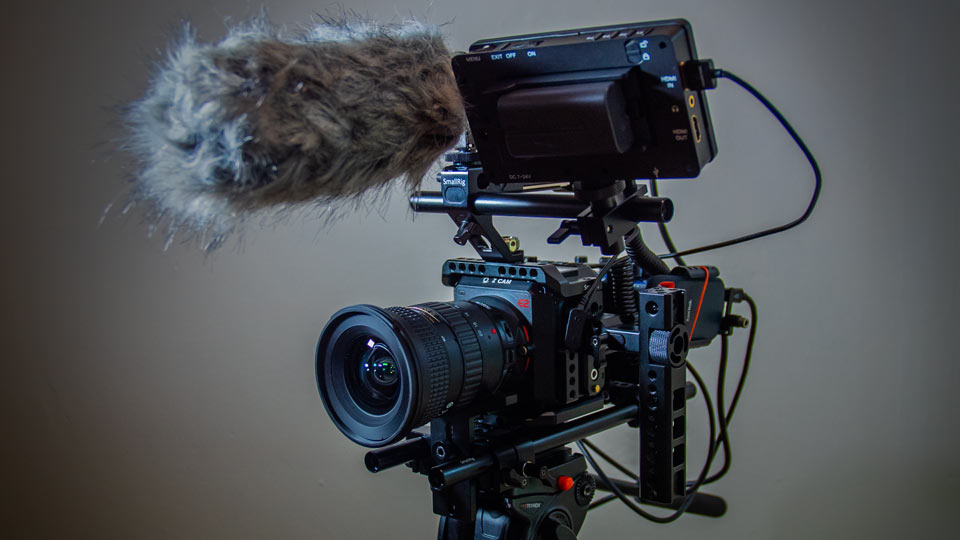
Z Cam E2 Wrap up
So… overall it’s a really cool camera.
I can’t wait to shoot more with it. I will be traveling to Ecuador soon to film an event with a non profit, and I am really looking forward to seeing how it performs in the wild. (Stay tuned for more info on that)
I think the Z Cam e2 has great image quality and offers quite a bit for a small price ($1,999). However, that price can be a little deceiving. The ergonomics of just the camera are not great (it’s basically an aluminum box with an image sensor). You will definitely want to get some handles, a monitor and other accessories. (Be sure to check the facebook group to find out if your desired gear is compatible with the camera – one of the downsides to it being a small and fairly new camera manufacturer)
All the accessories can add to the price unless you already own a lot of them – but this is the case with all cameras.
The manufacturer’s openness online is great, and pretty cool to see. The constant firmware updates kind of make me feel like I’m a beta tester for their camera, but I’m willing to live with it since they keep improving things. (They are supposed to be adding raw recording soon)
As with any camera gear there are positives and negatives. For me there aren’t any real deal breakers that I have encountered so far.
